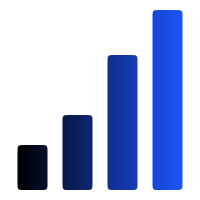Applying Statistics In Product Analytics - Issue 165
Distributions 101: Introduction to statistical distributions, their types, use cases, and examples
Welcome to the Data Analysis Journal, a weekly data science and analytics newsletter.
Earlier this year, I published Applying ML in Product Analytics, where I covered the types of ML models and their use cases we apply to predict user behavior.
Today, I want to zoom out from ML and talk about statistical methods we use to describe user behavior. Obviously, first, you have to describe and learn events before you can infer and predict them.
Applying core statistics in product analytics mostly comes down to understanding:
Causal inference
Distributions
Significance and Confidence
Correlations and Regressions
Law of Large Numbers and Central Limit Theorem
This week’s publication is a continuation of my earlier What Statistics Are Used In Data Analysis? and is also a deep dive into distributions aimed at analysts, data scientists, and product owners working with data and ML products.
Below, I’ll share a guide to help you decide which distribution to apply for your use case, analysis, or forecast.
I have a secret fascination with distributions. They circulate all around us in decision-making, analysis, coincidences, probabilities, chances, estimations, forecasts, and more. I believe that reading distributions is a way to understand such phenomena as luck, success, failure, or karma.
Distributions are so underrated in analytics, and it feels like many schools are on a mission to present distributions as tedious, complex, and unnecessary. Most students don’t quite understand why they need to learn distributions or what to do with them. While researching this publication, I went through dozens of publications, videos, and tutorials on distributions to find any guidance on the “applied” use cases and examples. There is a lot of information about what distribution is and how to understand it, but not much on when/why you would apply which distribution type.
Below is my simplified and practical guide, condensed to only essential must-know concepts for you to understand types of distributions and when to apply them for which analysis or inference.



